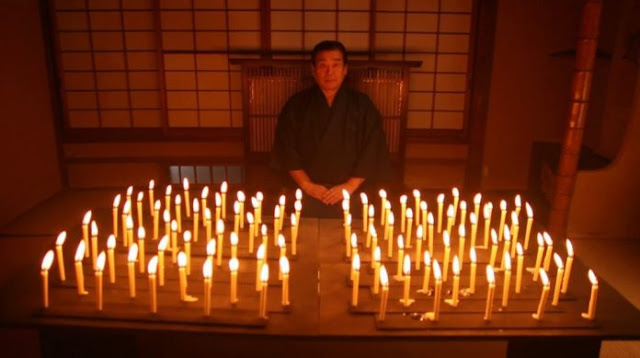Japanese most dangerous game: Hyaku Monogatari Kaidan kai 百物語怪談会

Japan is believed to be one of the most haunted places on Earth : Japanese people have been telling stories about vengeful "demons" (yōkai 妖怪) and "ghosts" (yūrei 幽霊) for centuries and, even now, in Tokyo, there are many haunted places ( shinrei supotto 心霊スポット). Edo period (1603-1868) was the Golden Age of Japanese ghost stories (Kaidan 怪談). Ghost stories were originally based on Buddhist moral tales and became a summer pastime; in fact, the traditional season for ghost stories is in August, when the spirits of the dead come back to the living world according to the Buddhist Obon festival (Obon お盆). A popular pastime in the Edo period was the game " A gathering of one hundred supernatural tales " (Hyaku monogatari Kaidan kai 百物語怪談会). Originally conceived as a test of courage for samurai, this game was considered to be so dangerous that most people would leave before the end of it . How to play according to the book "History o


